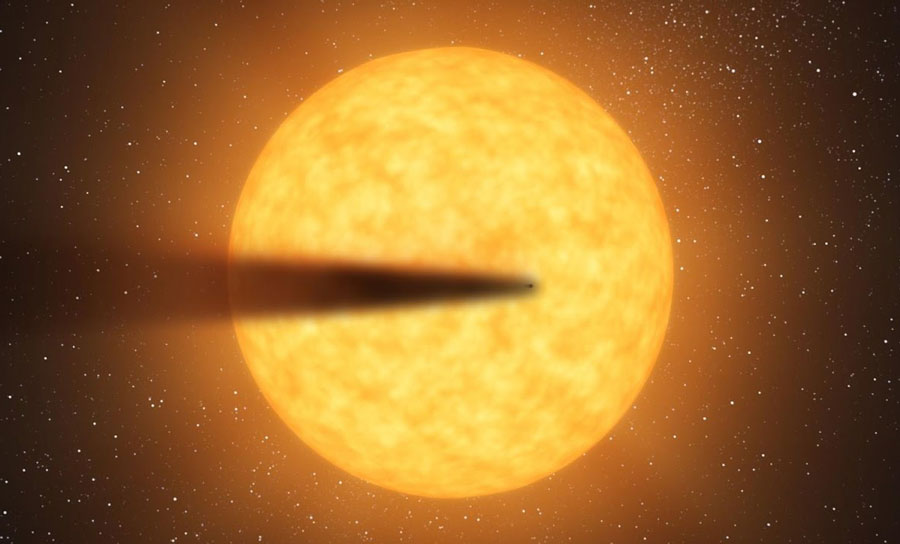While aliens are unlikely, the SETI Institute checks out this strangely-dimming star with the Allen Telescope Array.

By now you have surely heard that Boyajian’s star, aka Tabby’s star, aka KIC8462852, is going through another weird dimming phase. We do not have a satisfactory explanation for why Boyajian’s star sometimes dims by 20%, and many astronomers are monitoring the star with optical and infrared telescopes, hoping to learn more about this strange behavior. Likewise, the SETI Institute has shifted into gear using our own radio telescope, the Allen Telescope Array (ATA) to monitor Boyajian’s star for the presence of artificial radio transmissions that could reveal a civilization like ours in that system.

Backing up a bit, remember that Boyajian’s star was discovered in data from the Kepler space telescope and shows the most unusual “dimming” of a star ever observed. From time to time, the light from this star is blocked by some enormous quantity of material moving between the star and our telescopes. But this material is unexpectedly cold and does not give off the infrared radiation expected if it were orbiting the star in a relatively close orbit. This mysterious material is too big and too cold to be explained by a typical orbiting planet, and some scientists have wondered if we could instead be observing a giant structure built by an advanced civilization. For example, a huge megastructure is just what you would need to capture an enormous quantity of stellar energy to power massive engineering projects. Even more interesting, the timing of the present dip suggests that whatever this material is, it is situated at just the right distance from the star to be in the “habitable zone,” where we believe that life like ours could develop as it has on Earth.
So, last Thursday, as soon as we heard Boyajian’s star began another dimming phase, the SETI Institute reacted quickly and pointed our ATA toward that star with hopes of catching a tell-tale signal that might reveal a technological civilization. Using the same methods as in our previous study of the star (http://iopscience.iop.org/article/10.3847/0004-637X/825/2/155), we are making very deep and careful observations for signals that appear to be artificial – signals that could be generated by no known natural process.
This story is still unfolding, and it may be weeks before we can definitively state the results of our observations, so stay tuned. I promise that if we find something interesting, we won’t keep it to ourselves.
In the meantime, follow along with the search at our real-time observation site setiquest.info.





